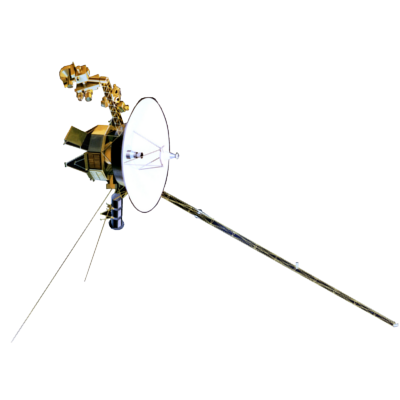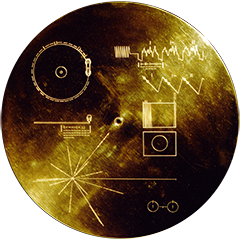Voyager LECP Data Analysis Handbook
Overview of the Voyager Mission and the LECP Investigation
The Voyager 1 and Voyager 2 spacecraft were launched from Cape Canaveral, Florida, during the summer of 1977. They were originally designed to conduct closeup studies of Jupiter and Saturn during their 5-year missions. Following the successful achievement of these objectives, their missions were extended to include flybys of Uranus and Neptune. Eventually, between them the 2 Voyager spacecraft would explore all the giant outer planets of our solar system, 48 of their moons, and the systems of rings and magnetic fields those planets possess.
The Low Energy Charged Particle (LECP) instruments on the Voyager spacecraft measure the differential in energy fluxes and angular distributions of ions >30 keV and electrons >20 keV, and the differential in energy ion composition >200 keV/nuc. The Principal Investigator for the LECP experiment is Dr. S. M. Krimigis of the Johns Hopkins University Applied Physics Laboratory. At Fundamental Technologies, Dr. Thomas P. Armstrong was involved in the Voyager LECP investigations as a Co-Investigator.
The LECP is one of 11 instruments (including the radiotelemetry system, which served a dual purpose) that operated at the planetary encounters, and it is one of 5 instruments that explore the fields and charged particles environments of the solar system (along with the MAG, PLS, PWS, and CRS experiments). The LECP instrument consists of 2 subsystems, the Charged Particle Telescope (CPT) and the Low Energy Magnetospheric Particle Analyzer (LEMPA). These instruments measure the intensity, energy spectra, composition, angular distributions, and spatial and temporal characteristics of ions and electrons that are encountered by the spacecraft. Such particles are fundamental components of the interplanetary environment (through solar, galactic, and local acceleration processes) and of the space environments that surround the planets.
Next: Voyager LECP Data Analysis Handbook - Instrument and Investigation Descriptions and Images
Return to Voyager
LECP Data Analysis Handbook Table of Contents.
Return to Fundamental
Technologies Home Page.
Updated 8/9/19, Cameron Crane
VOYAGER 1 ELAPSED TIME
*Since official launch
September 5, 1977, 12:56:00:00 UTC
VOYAGER 2 ELAPSED TIME
*Since official launch
August 20, 1977, 14:29:00:00 UTC
QUICK FACTS
Mission Duration: 40+ years have elapsed for both Voyager 1 and Voyager 2 (both are ongoing).
Destination: Their original destinations were Saturn and Jupiter. Their current destination is interstellar space.



